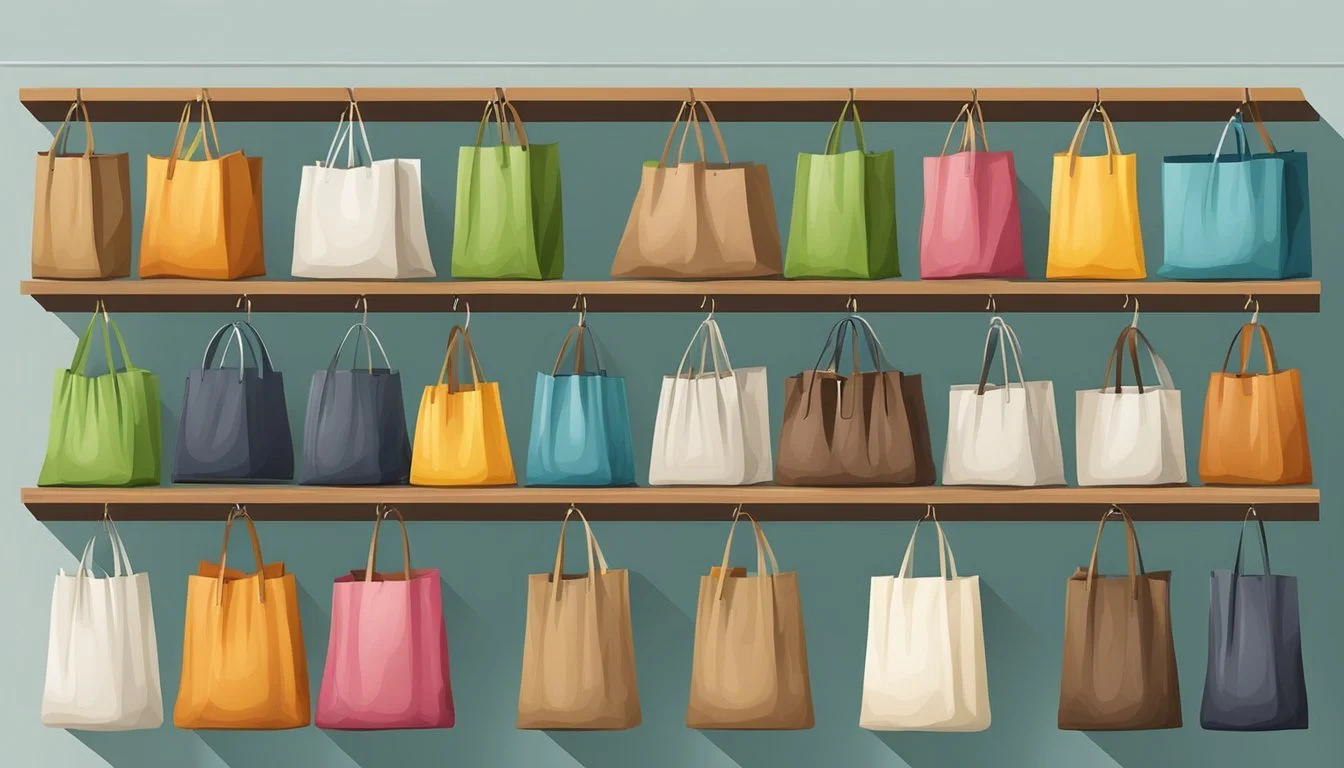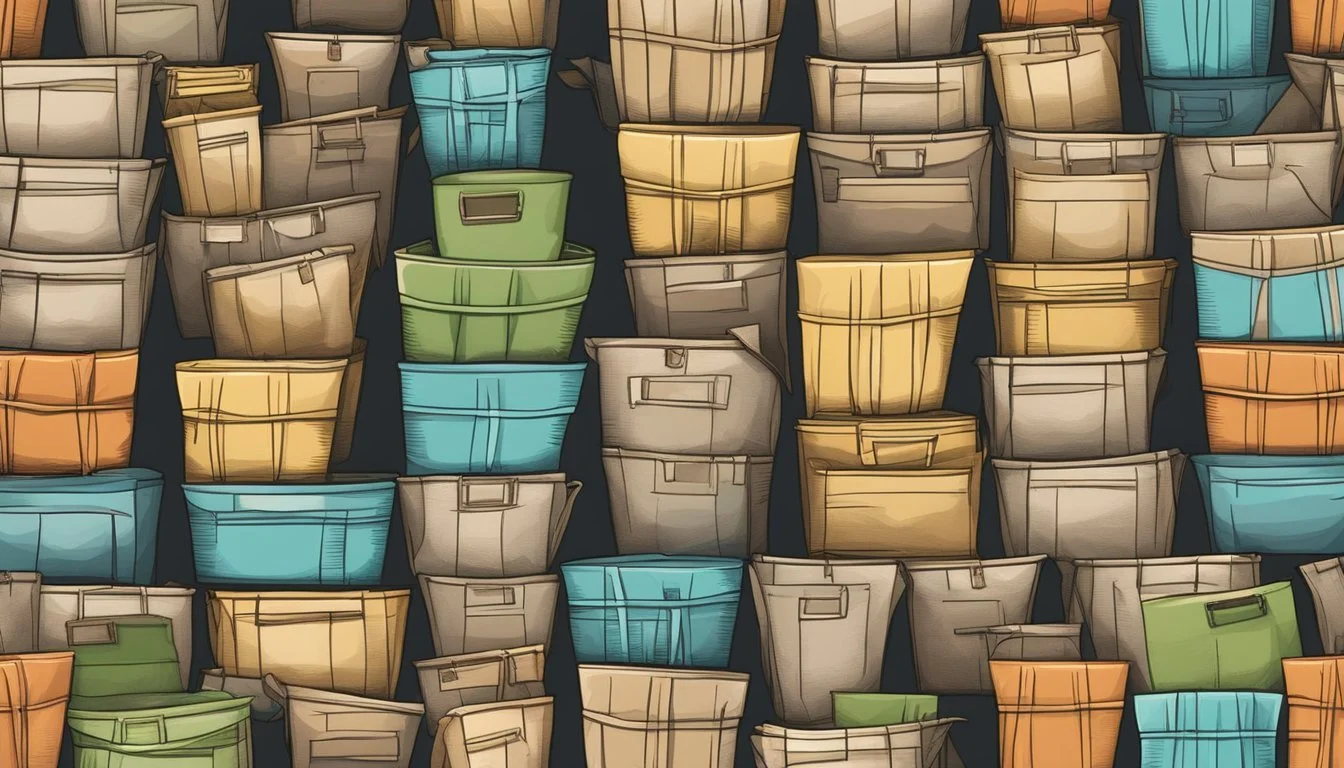How to Store and Organize Your Grocery Bags
Simple Tips for a Tidy Home
Storing and organizing grocery bags is an essential aspect of maintaining a clutter-free home environment. Proper storage not only ensures that these bags are readily available for reuse but also helps in reducing waste, making it a step towards sustainable living. With an array of options available, individuals can choose a system that best fits their space and lifestyle, ensuring that their preservation of grocery bags is both effective and efficient.
A key method in organizing grocery bags involves categorization, which can be based on size, type, or frequency of use. This allows for easy access and retrieval, saving time and effort in locating the right bag for any given purpose. Implementing simple, yet creative storage solutions such as repurposing household items like wipe containers can add both functionality and aesthetic appeal to the storage area. Additionally, ensuring that bags are clean and dry before stowing them away prevents mildew and maintains the quality of the bags for their subsequent use.
Understanding Different Types of Grocery Bags
When organizing grocery bags, it's imperative to recognize the unique characteristics of various bag types, understanding their material composition, sustainability aspects, and suitable reuse methods.
Plastic Grocery Bags
Plastic grocery bags are commonly made from high-density polyethylene (HDPE).
Sustainability: These bags are known for their environmental impact due to the long time they take to decompose.
Reuse and Recycling: They can be reused for multiple purposes, including waste bin liners or secondary storage. Recycling options are available, but not widespread; they must be clean and dry to be recycled properly.
Paper Bags
Paper grocery bags are typically crafted from kraft paper and stand out for their biodegradable nature.
Sustainability: They are often seen as a more environmentally friendly option because they decompose more quickly than plastic and can be made from recycled material.
Reuse and Recycling: Paper bags can be reused as gift wrapping or book covers, and they are widely accepted by recycling programs.
Reusable Grocery Bags
Reusable bags vary in material ranging from cotton, jute, to synthetic fibers like polyester or nylon.
Sustainability: These bags represent a sustainable choice, as they reduce the need for single-use bags and can minimize the overall environmental footprint when used consistently.
Material Durability: They are designed to be durable and can often be machine-washed, which allows for long-term reuse. However, proper care, including regular washing and allowing them to dry completely, is essential for maintaining their quality and hygiene.
Essential Storage Solutions for Grocery Bags
Properly storing and organizing grocery bags not only saves space but also makes reusing them more convenient. Whether one prefers eco-friendly options or uses plastic bags, having an efficient system ensures accessibility and maintains order in the home.
Designated Storage Spots
Finding designated spots for grocery bags is essential to maintain organization. Designate a drawer or a section in the pantry specifically for this purpose. For those who use reusable grocery bags, hooks on the back of a door or inside a cupboard can serve as an ideal organizer, keeping bags off the floor and within easy reach.
Grocery Bag Dispensers
Grocery bag dispensers are a handy storage solution for compactness and ease of access. Many people install a wall-mounted dispenser or use an over-the-cabinet holder to store plastic bags. A plastic bag dispenser can be created by repurposing an empty tissue box or wet wipe container, which dispenses bags one at a time for convenience.
Storage Bins and Baskets
Storage bins and baskets represent a flexible storage method for keeping grocery bags tidy and in one place. They can be labeled and placed on a shelf or inside a closet. By choosing baskets or bins that complement the room's décor, they double as a decorative element while fulfilling a practical need. For greater efficiency, folding plastic bags into small triangles before placing them inside the storage bin will maximize space usage.
Organizing Your Grocery Bags
Organizing grocery bags not only contributes to a clutter-free home but also makes them easily accessible for reuse. Proper folding, labeling, and use of dividers can significantly increase convenience during storage.
Folding Techniques
To maximize space, folding your bags neatly is essential. Begin by laying plastic bags flat and folding them lengthwise, mimicking the structure of a hot dog bun. For a compact form, fold the bottom corner up, creating a triangle, and continue this pattern until the bag is completely folded. End by tucking any excess into the triangle to secure it. This method applies similarly to paper bags, ensuring they are neat and stackable.
Labeling Systems
Labeling aids quick identification and keeps different types of bags sorted. One can utilize labels such as Plastic, Paper, and Reusable when categorizing. For an effective labeling system, consider using tags or stickers on storage containers or shelves. This allows one to retrieve the appropriate bag without rummaging through all.
Using Dividers
Dividers are instrumental in maintaining organization within the area designated for storing bags. Whether you utilize drawer dividers, separate containers, or store-bought separators, they should cater to the different sizes and shapes of the bags. Incorporating dividers in a drawer or on a shelf turns a potential mess into an array of neatly sectioned slots, enhancing convenience and order.
By folding bags to minimize space, clearly labeling them for quick access, and utilizing dividers for separation, the storage of grocery bags can be transformed into an efficient system.
Creative Reuse and Repurposing Ideas
In an effort to minimize waste and maximize utility, individuals can engage in innovative repurposing methods that transform ordinary grocery bags into useful household organizers.
DIY Tissue Box for Plastic Bags
One can repurpose an empty tissue box into a convenient dispenser for plastic bags. By simply stuffing the plastic bags into the box, they can ensure a tidy and functional storage method. Here's how to do it:
Empty a tissue box: Make sure it's clean and free from any debris.
Fold plastic bags into triangles: This will facilitate easy pulling from the tissue box.
Stuff bags into the box: Place the folded bags in a way that allows one to cascade out when the other is pulled.
Transforming Bags into Organizers
Plastic grocery bags can be creatively used as compartmentalized organizers within drawers or closets. To categorize and store items, they can be knotted and labeled accordingly.
Categorize items: Segregate items to be stored in individual bags -- for instance, craft supplies, seasonal accessories, or small toys.
Label each bag: Use a marker to write on each bag or attach tags for easy identification.
Through these repurposing strategies, individuals not only keep their spaces organized but also contribute to environmental sustainability by reusing material that would otherwise add to landfill waste.
Reducing Grocery Bag Clutter
Storing and organizing grocery bags can transform a chaotic kitchen or utility space into a streamlined and efficient area. The key to reducing grocery bag clutter lies in simple decluttering techniques and a commitment to regular maintenance.
Decluttering Techniques
Assessment: Begin by assessing the collection of grocery bags. Discard any that are torn, dirty, or unusable. Recycle these if possible, according to local recycling guidelines.
Limitation: Aim to keep only a reasonable number of bags that match your needs. For many households, a collection of 15-20 bags is sufficient.
Storage Solutions:
Use a dedicated container, such as a box or a specially designed plastic bag holder, to store folded bags. This keeps them in one place and prevents them from spreading throughout the home.
Opt for wall-mounted dispensers to save space. These can be filled with folded bags, providing a tidy and accessible storage method.
Reuse containers, like wet wipe cylinders or tissue boxes, as dispensers. These can be decorated to suit home decor and provide an easy way to dispense a bag when needed.
To maintain an organized space, routinely return bags to their designated storage after shopping trips. Additionally, consider reducing the influx of grocery bags by using reusable cloth bags when shopping.
Sustainable Practices and Environmental Considerations
When focusing on the storage and organization of grocery bags, it is important to consider their environmental impact and prioritize sustainable practices. Both individual behavior and wider systemic changes play crucial roles in this transition.
The Impact of Plastic Bags on the Environment
Plastic bags have a significant and well-documented negative effect on the environment. They are commonly made from fossil fuel-based polymers and can take centuries to degrade. On decomposition, plastic bags break down into microplastics, which contaminate waterways, soil, and wildlife. The production and disposal of plastic bags release greenhouse gases, contributing to climate change.
Annual Usage: An estimated 1 trillion plastic bags are used globally each year.
Recycling Rate: Only about 1-3% of plastic bags are recycled worldwide.
Given their light weight, plastic bags are prone to be carried by wind, often ending up in oceans and other habitats, posing a threat to marine life and birds.
Promoting the Use of Reusable Bags
Reusable bags, including those made from natural fibers or recycled materials, are a sustainable alternative to single-use plastic bags. Using reusable bags can drastically reduce the number of plastic bags produced, consumed, and discarded.
Types of Reusable Bags:
Cotton or Canvas: Highly durable and compostable at the end of their lifespan.
Synthetic Fabrics: Often made from materials like nylon that are strong and washable.
Recycled Plastic: Reusable bags made from recycled plastics give new life to plastic waste.
Many grocery stores and consumers have started to shift towards reusable bags. This move often requires an initial investment but saves resources over time. It also reduces the environmental toll associated with plastic bag pollution. In addition to using reusable bags, individuals can:
Store bags efficiently: Keep a stash of various sized reusable bags in a cool, dry place or a dedicated cooler bag to maintain their condition.
Keep bags clean: Regular washing of fabric reusable bags to maintain hygiene.
Recycle worn-out bags: Find local recycling programs that accept worn-out reusable bags.




